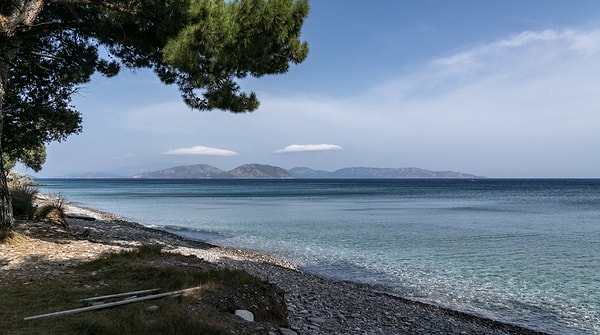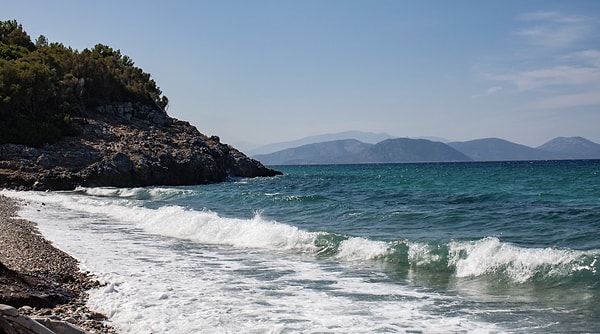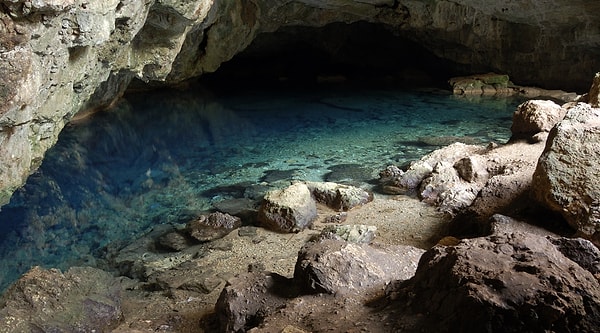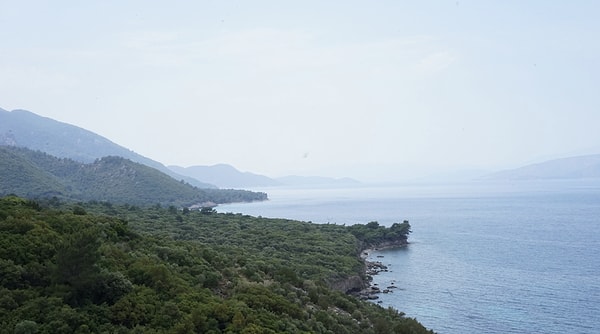Explore Dilek Peninsula National Park: Nature, History, and Coastal Beauty
Dilek Peninsula Büyük Menderes Delta National Park, one of the most fascinating natural areas of the Aegean Region, offers a unique route where nature and history are intertwined with its lush forests, deep blue bays, rich biodiversity and history. Located just south of Kuşadası and close to important tourist districts of Aydin such as Soke and Didim, this natural wonder continues to be a favourite of both local and foreign tourists throughout the year.
With this detailed Dilek Peninsula travel guide, you will discover every detail from the history of the national park to its culture, from hidden bays to hiking routes, from legendary spots such as Zeus Cave to other places to visit in the vicinity. If you are looking for a peaceful and discovery-filled route where you can be alone with nature in the Aegean in 2025, Dilek Peninsula may be an ideal choice for you.
If you are ready, let's set off to the heart of nature!
History and Cultural Background of Dilek Peninsula

Dilek Peninsula is a region that has been influenced by many civilisations throughout history. This peninsula, which was included in the Ionia region in ancient times, was the scene of intensive settlement, especially during the Hellenistic and Roman periods, with important ancient cities such as Priene, Miletus and Didyma in the immediate vicinity. The peninsula, referred to as 'Mykale Mountain' in ancient sources, also draws attention geographically with its mountain ranges extending in the east-west direction.
The region, which was mostly closed to settlement during the Byzantine and Ottoman periods, has preserved its naturalness for many years. In 1966, it was declared a national park and was taken under protection and it preserved its natural balance to a great extent.
Natural Beauties and Biological Richness

Dilek Peninsula is one of the most important nature conservation areas of Turkey with its endemic plant species, Mediterranean maquis cover, wildlife and geographical diversity. There are more than 800 plant species within the borders of the national park and more than 30 of them are endemic. Mountain goats, wild boars, squirrels, foxes and the Anatolian Parsi, which is in danger of extinction, are part of the natural life in this region.
It is also known that caretta caretta turtles and Mediterranean monk seals, which are under threat of extinction, live in the park. It is possible to watch wildlife from observation towers and it is also an ideal place for nature lovers in terms of photography.
Unique Beaches and Bays

One of the biggest attractions of the Dilek Peninsula is its fascinating beaches and bays. Thanks to the controlled access to the area, these bays have preserved their cleanliness and naturalness. Four main bays within the national park are open to day visitors:
Icmeler Bay: It is the bay closest to the entrance and receives the most visitors. It is especially suitable for families with its clean sea and picnic areas.
Aydınlık Bay: It offers a pebble beach instead of sand, is less crowded and ideal for diving.
Kavaklıburun Bay: It is indispensable for those who like swimming with its deep and cool waters. There are also hiking trails around it.
Karasu Bay: It is the quietest and most pristine bay, the sea is quite clear and ideal for those who want to be alone with nature.
It is possible to enter the bays by private car, but it is recommended to arrive in the morning due to the density during the summer season. Also, entrance to the national park is chargeable and it would be useful to go early as there is a limited number of vehicles.
Zeus Cave

Zeus Cave, located at the entrance of Dilek Peninsula National Park, attracts attention with its natural beauty and mythological story. The cave, which can be reached by a short walk, contains a cool and clear water pond formed by underground springs. In this pond, which is a combination of fresh and salty water, the colour of the water varies according to the daylight; it is possible to see different shades of blue here.
The cave, named after the god Zeus in Greek mythology, is known as the place where he took refuge to relieve his anger according to legend. Although visitors who want to cool off in the summer months prefer to swim here, you should be careful due to the sudden depth and coldness of the water.
Zeus Cave, which is a great stop for both nature lovers and photography enthusiasts, is one of the must-see places on your Dilek Peninsula trip.
Activities to do in Dilek Peninsula

The peninsula offers a wide range of opportunities not only for swimming and sunbathing, but also for nature sports and exploration. It is suitable for many activities such as hiking routes, mountain bike trails, botanical observations, wildlife photography and diving.
The hiking routes, especially on the slopes of Mykale Mountain, offer spectacular views. It is possible to explore the natural richness of the park with guided nature walks. Bird watching tours organised in spring are also very popular.
Historical Sites and Nearby Ancient Cities

Some of the historical sites that must be visited by those who come to Dilek Peninsula are located in the immediate vicinity. These are
Priene Ancient City: It is only 15 km away from the peninsula. Dating back to the 4th century BC, this ancient city attracts attention with its regular city planning. The ruins of the Theatre, Temple of Athena and Agora are quite impressive.
Miletus Ancient City: Miletus, the city where the ancient Greek thinker Thales lived, is an important destination with its monumental buildings and historical past.
Didyma Ancient City: Known for its famous Temple of Apollo. This is also one of the important divination centres of antiquity.
These three ancient cities are at distances that can be visited in one day and complement the cultural aspect of the Dilek Peninsula trip.
Transport Information: How to get to Dilek Peninsula?

Dilek Peninsula is quite easy to reach. The nearest centre is Kuşadası, and the entrance to the national park is reached by reaching Güzelçamlı Mahallesi via Söke. Güzelçamlı is located right at the entrance of Dilek Peninsula National Park.
It takes about 30 minutes by private car from Kuşadası.
The road is shorter and flatter for those coming from Söke.
Those who want to use public transport can come to Güzelçamlı by minibuses departing from Kuşadası or Söke. From Güzelçamlı, the park can be reached with a short walk.
In the summer months, it is possible to reach the Dilek Peninsula bays by sea with daily boat tours organised by private tour companies.
When to visit Dilek Peninsula?
The ideal periods for visiting are spring and autumn. During these periods, air temperatures are suitable for both hiking and swimming activities. In summer, the region can be quite busy. In addition, entrances to some parts may be restricted due to the risk of forest fires in July and August.
Keşfet ile ziyaret ettiğin tüm kategorileri tek akışta gör!

Send Comment